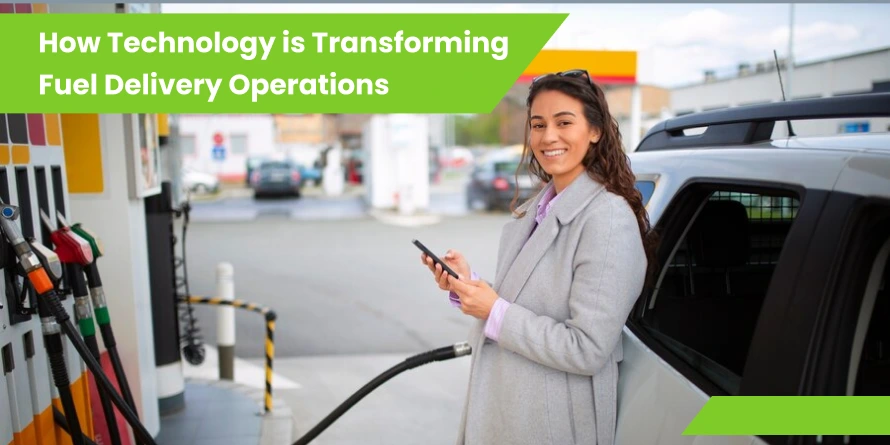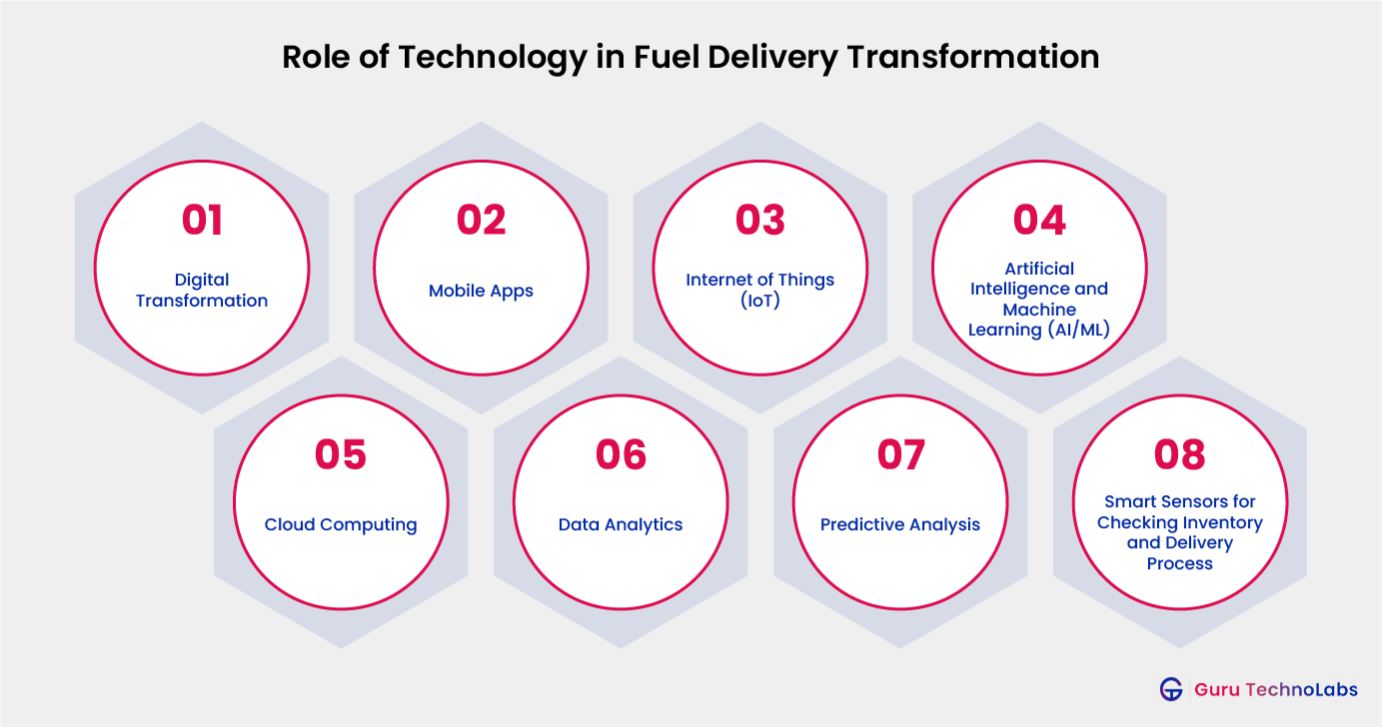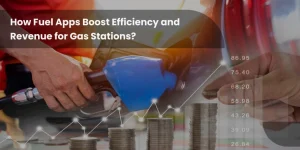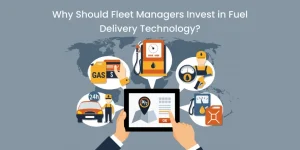How Technology is Transforming Fuel Delivery Operations

Fuel delivery, which started as an almost nonexistent business model a decade ago, is now one of the most popular. Modern technology is powering the massive wave of changes happening in online fuel delivery. It is reshaping the industry in more ways than we can anticipate. New business models, the introduction of new technologies, and user preferences are evolving quickly, and businesses face something new every passing day.
Online fuel delivery has heightened consumer interest and participation in recent years. Understanding the right fuel delivery business model is crucial for companies entering this market. Riding on modern technology, the online fuel delivery industry is projected to grow $8.9 billion by 2031. Much of the growth for the industry has been triggered by an increasing inclination towards digital and doorstep solutions.
Above everything else, the modern consumer is after comfort and instant gratification when ordering products online. On the other hand, retailers or fuel delivery business owners understand this approach and are coming out in big numbers to grab this opportunity by implementing emerging technology solutions. As technology advances, so do the offerings to the consumer and business owners, which keep improving.
But how profound is the influence of technology in fuel delivery operations? What are the areas that are most impacted? Let’s find out without any ado.
The Role of Technology in Fuel Delivery Operations

The rapidly evolving landscape of fuel delivery technology is driven by on-demand fuel delivery trends that shape the industry and drive innovation. These trends reflect the changing needs and expectations of both consumers and businesses, influencing how online operations are managed and optimized.
Digital Transformation
The fuel delivery industry has enjoyed a dramatic transformation in the way it is done through digitization. Digitalization is gradually replacing conventional analogs to effectively manage operations, supply chains, and customer satisfaction in the fuel distributors industry.
For instance, digital transformation services allow fuel companies to automate real-time stock management, billing, and tracking, eliminating human interconnectivity. These platforms enabled companies to be more adaptable and cue-driven to market requirements, bringing many benefits to fuel suppliers.
Mobile Apps
Mobile applications are becoming essential to the current and future fuel delivery business, enhancing operations and customer experiences. Many businesses are leveraging mobile apps to optimize fuel delivery operations by streamlining ordering, scheduling, and tracking fuel deliveries in real time. Fuel delivery companies are using mobile apps to allow customers to order, schedule delivery, and even track the status of their fuel in real-time. If you’re wondering how fuel delivery apps work, they utilize advanced tech to streamline the entire process.
These apps create a smooth interface, leading to higher customer engagement and lower resistance to purchasing the products. Statista has estimated global app downloads to exceed 257 billion in 2025, highlighting the significance of mobile technology in industries including fuel delivery.
Do You Need The Right Technology Partner?
Speed Up Your Fuel Delivery Software Development With Us………….
Internet of Things (IoT)
The IoT effectively transforms fuel delivery operations and their efficiency by generating real-time data, making it more manageable to address operations. IoT devices, such as smart fuel dispensers and connected delivery trucks, offer unprecedented visibility into the entire fuel supply chain.
Such gadgets can check fuel levels, search for leakage, and notify the operators of various issues before they develop. This enhanced monitoring ensures safety and compliance, eliminates fuel waste, and minimizes environmental impact. Moreover, according to a report by MarketsandMarkets, IoT in the energy sector is all set to reach $45 billion before 2026, driven in part by innovations in fuel delivery systems.
Artificial Intelligence and Machine Learning (AI/ML)
Artificial Intelligence (AI) and Machine Learning (ML) bring fuel delivery to unprecedented heights through intelligent decision-making and improved operational performance. AI algorithms can be trained on large datasets and operate in real time; this helps predict future fuel demand, including consumption patterns based on historical records, weather patterns, and economic indicators.
This predictive analysis helps companies optimize delivery schedules so they never overstock or run out of fuel. Machine learning algorithms continuously improve due to new data, increasing the accuracy of predictions over time.
In this scenario, businesses could integrate AI/ML technologies into fuel delivery services to optimize operations, ensure customer satisfaction, and win the battle for competition within a dynamic marketplace.
Cloud Computing
Cloud computing is becoming a dominant technology in fuel delivery, storing, and processing large amounts of data from various sources, such as web apps, IoT, and sensors, delivering a superior experience. Cloud technology also supports the scalability needed for enterprises to grow and adapt to evolving market conditions.
Fuel delivery companies can use cloud-based solutions to quickly expand their services, whether adding new locations, new app features, or adjusting to regulatory changes.
Data Analytics
Through data analytics, the fuel delivery industry is seeing new opportunities and possibilities it has not dreamt of before. Fuel distributors can use data from different interaction points with customers and suppliers, delivery routes, brands’ preferences, and fuel consumption trends to make better decisions and streamline their activities.
Analytical information contributes to understanding demand trends and anticipating their changes, minimizing fuel consumption, and enhancing delivery performance. In the case of a disruption of supply chain processes or fluctuations in the price of fuel, fuel distributors can make the necessary adjustments by accessing current data on fuel distribution, making delivery time efficient.
Predictive Analysis
One of the most effective tools in the reformation of fuel delivery is the technique known as predictive analysis. So, having historical data and employing various types of extended machine learning, fuel companies can predict the future demand for fuel. This helps in many commercial processes, such as inventory storage and delivery time to avoid out-of-stock or overstock issues.
Predictive analytics likewise helps find conditions under which equipment may fail or supply chain links might be compromised, thus reducing service outages considerably and improving service predictability.
Smart Sensors for Checking Inventory and Delivery Process
Fuel delivery is changing somewhat, and smart sensors are becoming indispensable for inventory tracking and optimizing deliveries in ways that were previously not possible. These fuel-monitoring sensors, installed in fuel tanks, dispensers, and delivery vehicles, offer real-time information on fuel levels, temperature, and flow rates to guarantee that fuel is delivered optimally and precisely.
Some advantages of adopting smart sensors in the fuel supply chain are as follows:
- Human interference can be reduced at several stages of the supply chain, such as fuel theft being complex to commit and inventory being managed efficiently.
- Besides inventory tracking, it has incorporated smart sensors that help monitor the delivery vehicles.
- Fuel distributors can track the position and activities of every delivery truck through real-time GPS data, which means fuel trucks will arrive on time, and fuel consumption during transportation will be low.





















